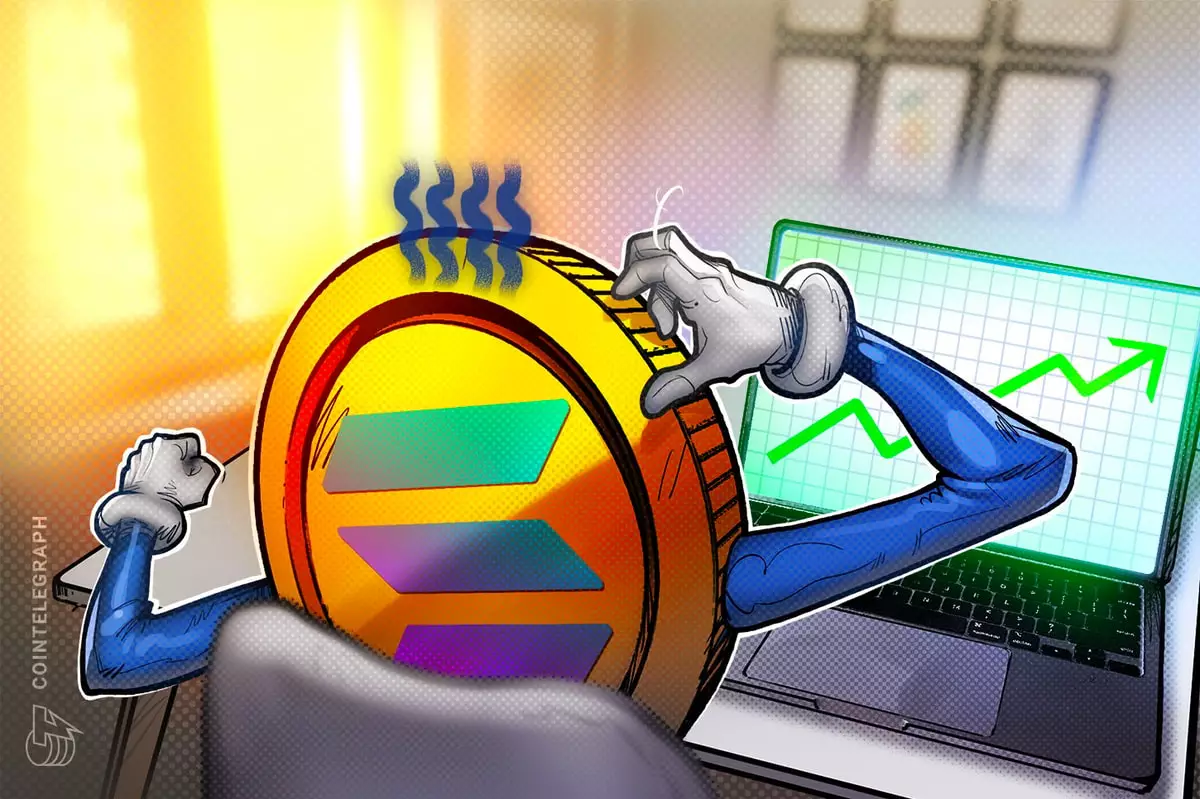The price of Solana’s SOL (SOL) experienced a significant surge of 20% between September 28 and October 6. This extraordinary rally begs the question: is Solana merely following the footsteps of Bitcoin (BTC), or are there other underlying factors driving its upward trajectory?
Before this price breakout, SOL encountered a turbulent period after a U.S. court approved the sale of $1.3 billion in SOL from the bankrupt exchange FTX. Concerns arose regarding the potential burden this massive liquidation could impose on the crypto market. To mitigate these concerns, the bankruptcy court mandated that the sale be carried out in weekly batches through an investment adviser, adhering to predetermined rules.
Following the initial impact of the news, SOL’s price plummeted to a two-month low of $17.34 on September 11. However, the bulls regained some confidence as SOL reclaimed the $20 support on September 29. Interestingly, this recovery coincided with a successful upgrade to version 1.16, resulting in a 16% boost for SOL over the next seven days.
The rally of SOL was not solely driven by its recovery from the FTX bankruptcy saga. Solana’s surge was also supported by the growing usage of decentralized applications (DApps) and increased volume in non-fungible tokens (NFTs) on the network.
When analyzing networks focused on DApp execution, the number of active users becomes a crucial factor. By quantifying the addresses involved in smart contracts, which serve as a proxy for the number of users, we can gauge the network’s adoption and popularity. Notably, Solana outperformed Ethereum in this aspect during the same period, with active addresses engaging with DApps exceeding Ethereum’s count of 55,230.
Solana’s allure in the NFT market is attributed to its cost-efficiency and scalability. Through data compression and off-chain storage, Solana offers a more feasible production process for NFTs in larger quantities, as they require lower minting fees. Consequently, creators can reach wider audiences, leading to Solana overtaking Polygon in NFT sales, accumulating $6.8 million in value over the past seven days according to CryptoSlam. However, it should be noted that in the previous month, Solana fell behind Polygon with $23.9 million in NFT sales compared to Polygon’s $31 million.
A substantial driver behind SOL’s recent surge could be attributed to the network upgrade to version 1.16 on September 28. This update introduced a “gate system” to ensure gradual activation of new features, promoting network stability and minimizing issues arising from sudden changes. Moreover, the update brought forth “confidential transfers,” utilizing zero-knowledge proofs to encrypt transaction details, enhancing user privacy. Other notable improvements include better RAM usage for validators, resizable data accounts, and a mechanism to identify corrupted data. These enhancements enhance the efficiency, privacy, and security of the Solana blockchain, marking a significant milestone in its development.
A Competition in a League of its Own
Although Solana has made remarkable strides in privacy, scaling, and security, Ethereum’s layer-2 solutions currently dominate the landscape in terms of total value locked (TVL) and activity. For instance, Arbitrum and Optimism hold $1.73 billion and $637 million in TVL, respectively, according to DefiLlama, eclipsing Solana’s $326 million. Despite these external factors, including the FTX bankruptcy drama, investors remain fixated on the Ethereum ecosystem, which maintains its leadership position with a vast developer community and a plethora of consolidated decentralized applications.
Solana’s recent rally is far from being a mere imitation of Bitcoin’s movement. While the FTX bankruptcy storyline does exert some influence, Solana’s surge can be primarily attributed to its growing popularity and usage in the realm of DApps and NFTs. Additionally, the network upgrade to version 1.16 introduced crucial features, elevating the efficiency and security of the Solana blockchain. However, despite these achievements, Solana faces tough competition from Ethereum and its layer-2 solutions in terms of TVL and activity, reminding us that the battle for dominance in the crypto world is far from over.

